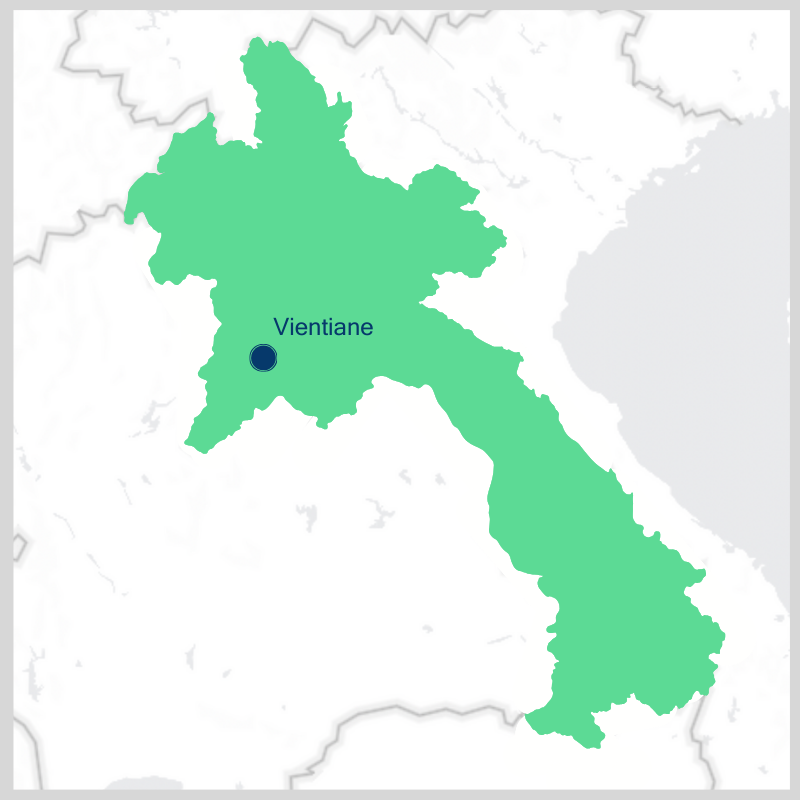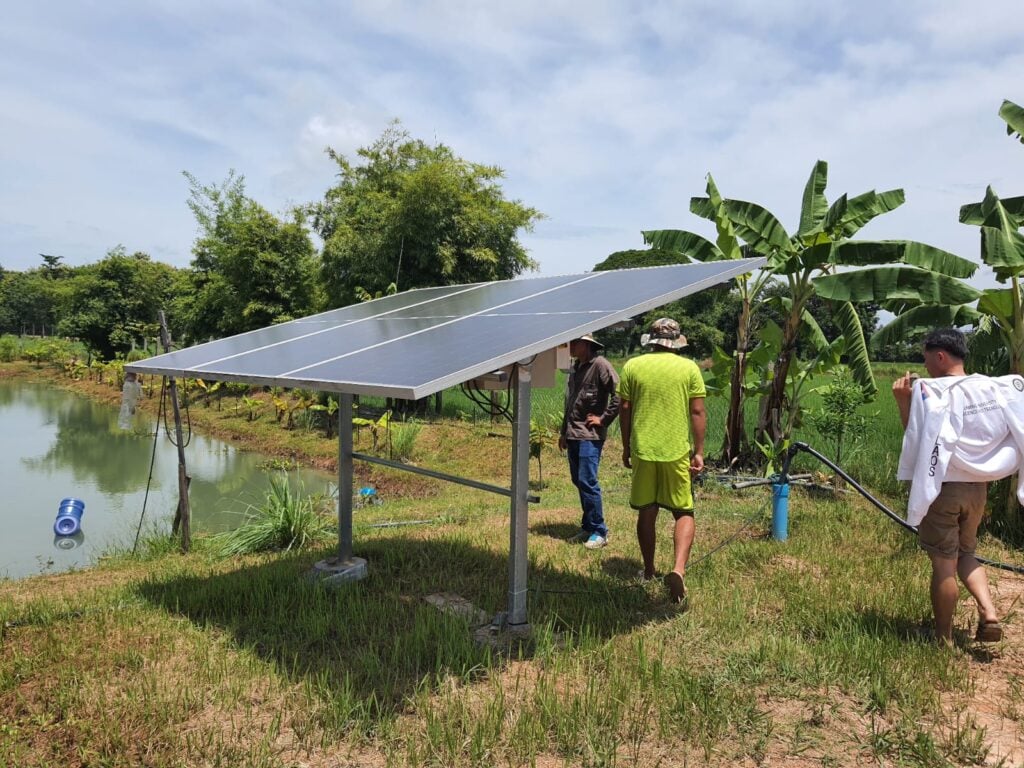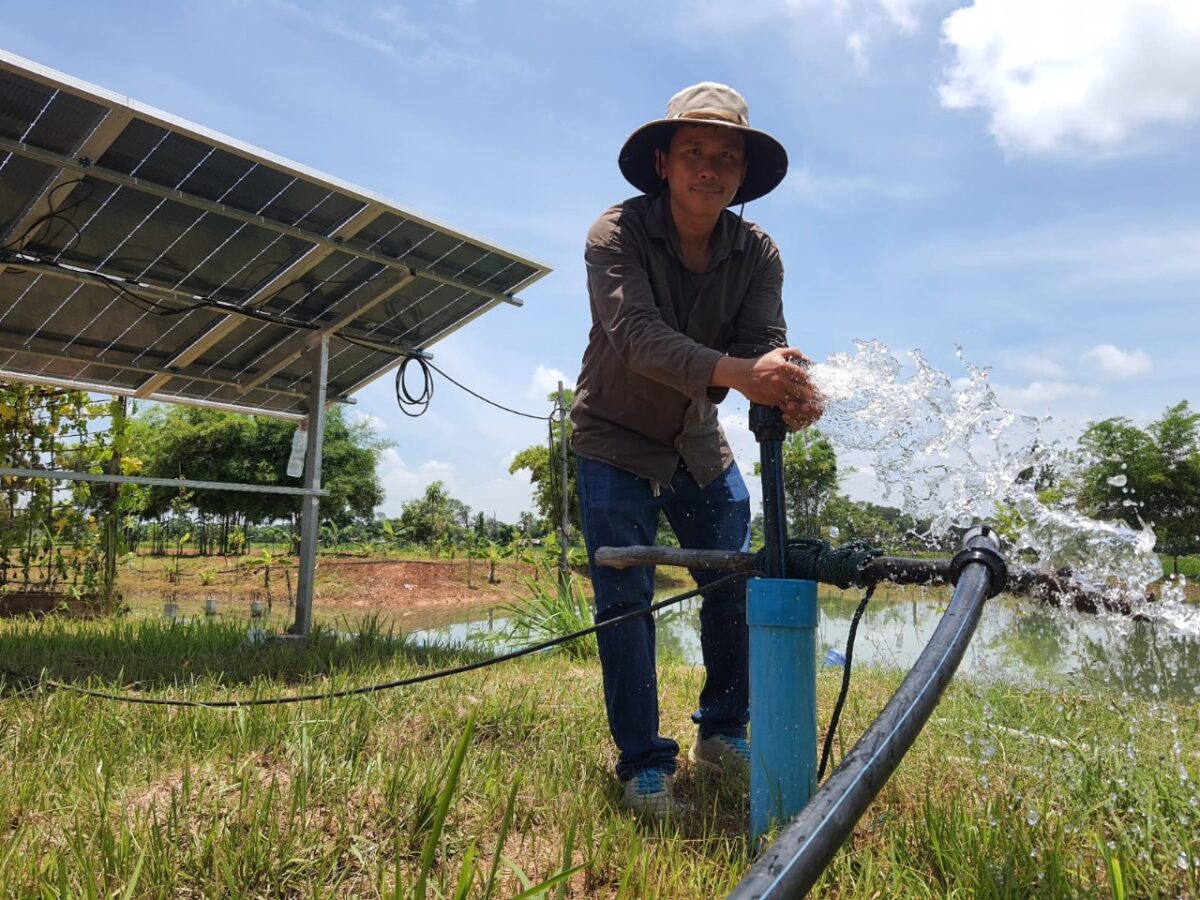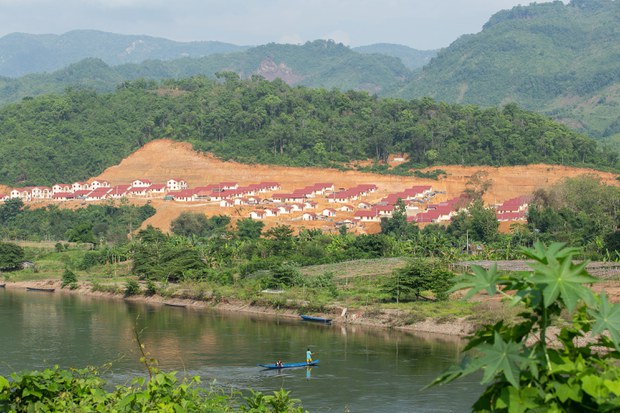VIENTIANE, LAOS – Rising energy prices due to ongoing inflation will likely boost solar energy in Laos. However, legislative support is needed to allow the price of solar power to compete with hydropower.
Toulasith Doungchanthip opened a farm gate and walked to a modest concrete building in the middle of a green rice paddy field 50 kilometers from the capital Vientiane. He then switched a breaker inside to turn on the lights.
“This is where we control the power supply,” said 35-year-old Toulasith, the Deputy Manager of the Solar Cell Equipment, Service and Installation Company, while working in Natham village in Pakgnum district.

A trained engineer, he founded this family business in 2020 after learning about the huge potential for solar power energy in Laos. His company has since promoted untapped solar energy for off-grid farms and remote communities, while teaching farmers to run solar energy-based farms.
“A large number of farms in the countryside still have no electricity to pump the water needed for irrigation. This gives the solar electricity businesses an opportunity to grow,” he said.
Toulasith’s company is one of the local-led actors that have put a big effort into accelerating the country’s energy transition.
In recent years, the government in Laos has expanded solar, wind and biomass energy as part of its strategy to diversify energy sources and ensure energy security.
Eight solar energy plants and four biomass power plants have been operating, with an installed generation capacity of 116 megawatts. But these plants contribute only 1% of the country’s total capacity.
Of the country’s total 11,661 megawatts, 83% is sourced from hydropower and 16% from coal-fired power plants.
“The government must increase the share of solar and wind power due to the fact that Laos’ main source of energy is hydropower, which works well during the wet season,” said a senior policymaker at the Ministry of Energy and Mines who wished to remain anonymous.
Laos’ peak energy demand is now at 1,800 megawatts during the dry season months of April and May. However, due to the scarcity of water at this time of the year, hydropower plants supplying Laos with power can only generate 72% of what is needed.
This gap has forced the country to re-import about 500 megawatts to meet demand, said the official.

On the other hand, the ongoing inflation has emerged as a factor that pushed Laos to rethink its energy plan.
Since 2020, the kip has plummeted almost 100% in value against the dollar. It has fallen from 9,300 kip per dollar in 2020 to 19,600 kip, and from 300 kip per Thai baht to more than 600 kip recently, according to the Bank of the Lao PDR.
Rising domestic prices have pressured the state-run Électricité du Laos (EDL) – which owns and operates the country’s electricity generation and transmission systems – to consider raising electricity rates because it must import power using US dollars and sell electricity in kip at a predetermined price.
Although Laos is a major electricity exporter in the Mekong region – it has been called “the battery of Asia” – the country suffers from energy instability because most power plants are owned by international businesses. The electricity generated is mainly for export.
This has led to the Lao government’s plan to increase the share of non-hydro energy sources – including solar, wind and biomass – to 30% of the country’s total energy supply by 2025.
Many renewable power projects are planned or being constructed, although the energy transition plan is still a long way from reaching its goal.
One of those is a 600-megawatt onshore wind farm in southern Sekong and Attapeu provinces. It is scheduled to start operation in 2025 and will become one of the largest onshore wind farms in Southeast Asia.
To speed up the use of solar energy, EDL is offering a special rate for solar power generated from an experimental project. The rate is US$0.08 per kilowatt-hour, higher than the rate for hydropower-generated electricity, which ranges from $0.05 to $0.06 per kilowatt-hour.
The country will need to develop legislation to support the nationwide implementation of the feed-in-tariff rate to make solar and wind energy more attractive and compete with low-cost hydropower.
“When making a comparison, solar electricity is still more expensive than other types of power in Laos,” said Toulasith.
He believes if the cost of on-grid electricity in Laos keeps going up, more people will turn to solar power, which has already happened as more consumers are installing solar power on their rooftops.
This demand will create an opportunity for the solar industry to expand rapidly, resulting in the drive for a new policy on a feed-in tariff rate that makes the price of solar energy fall.
“It will be a game changer for Lao energy once and for all,” said Toulasith.
This story was produced with support from the Internews’ Earth Journalism Network under the Our Mekong, Our Say project funded by USAID Mekong For the Future. It was first published in the Vientiane Times newspaper and edited by Mekong Eye’s editorial team.





